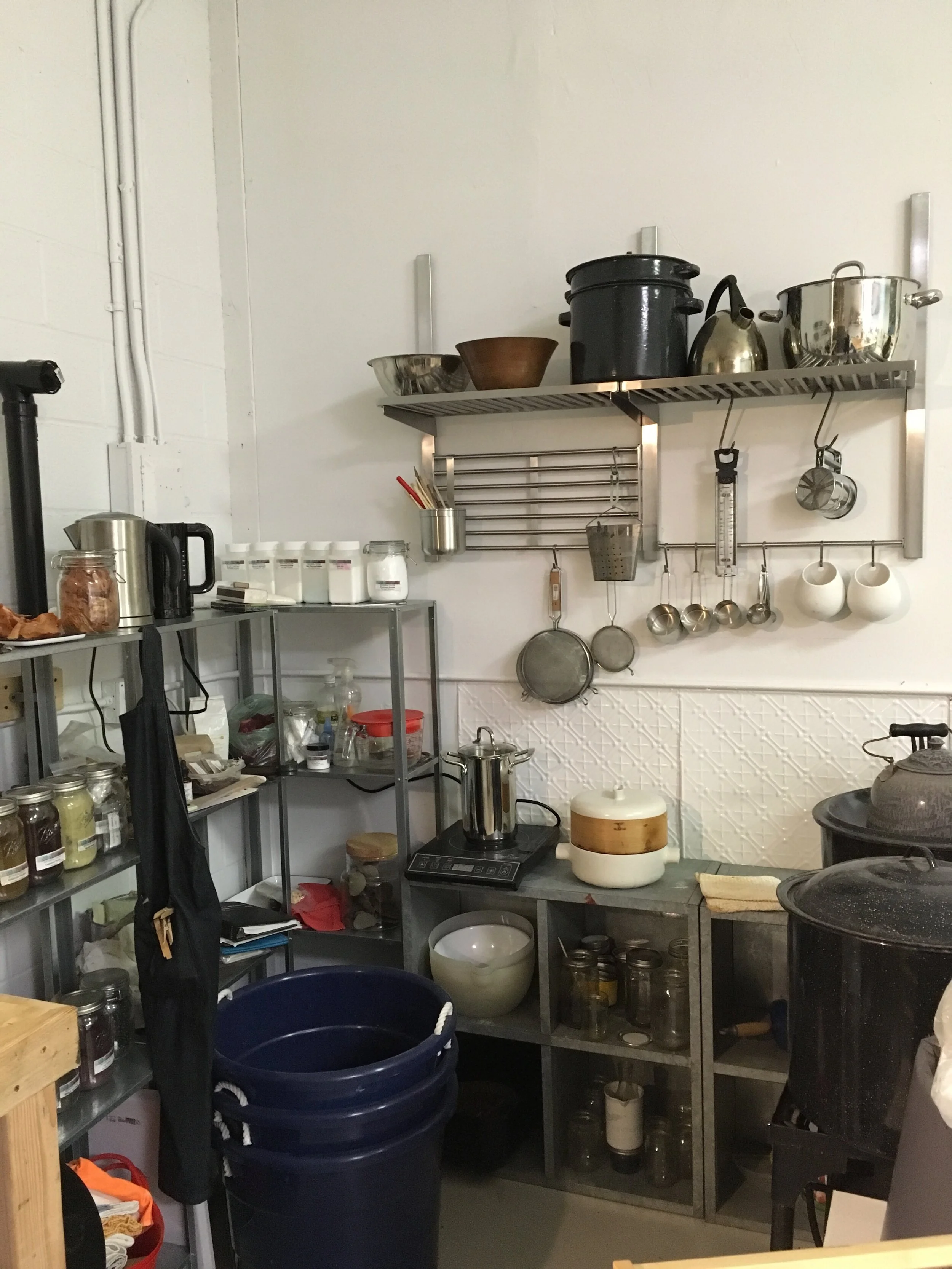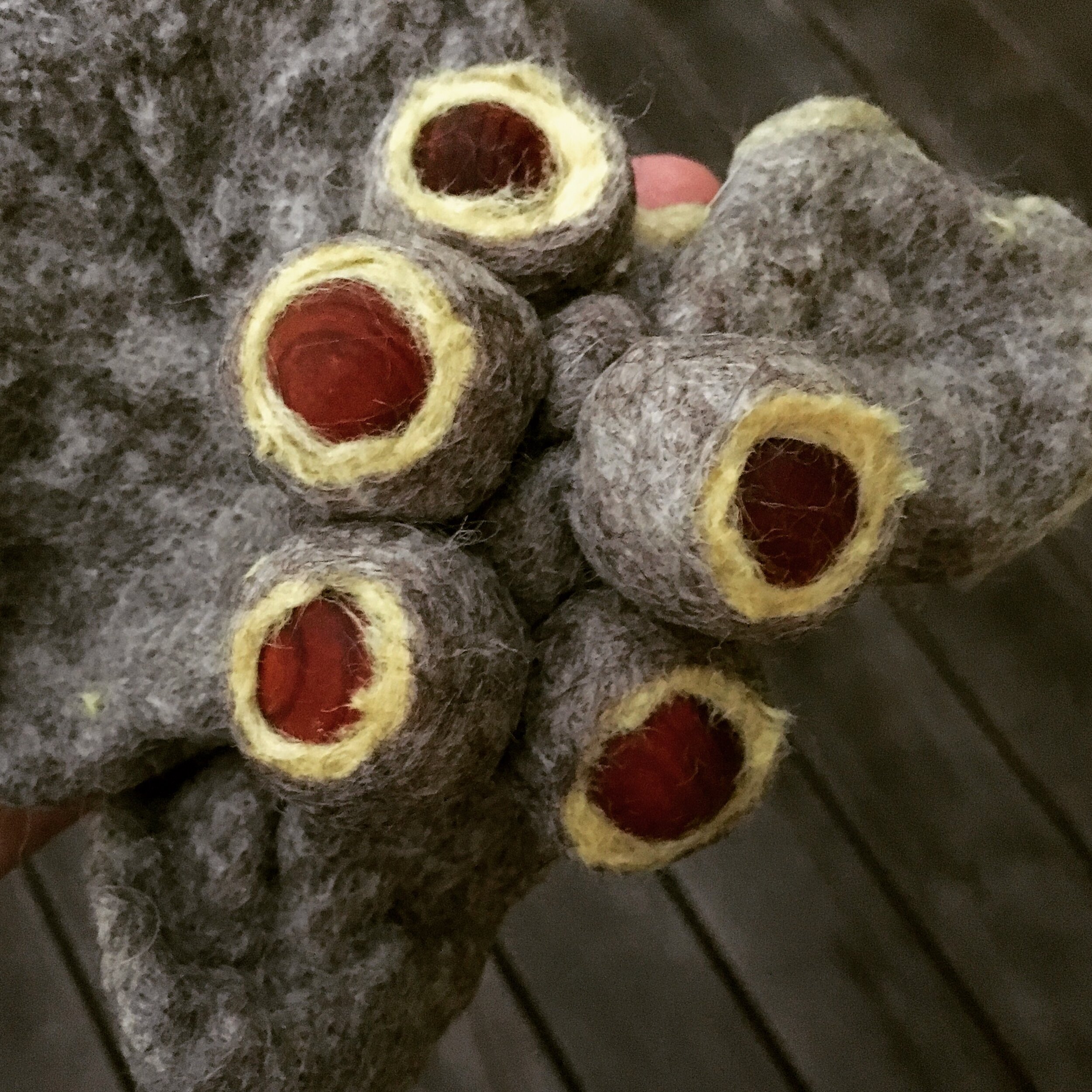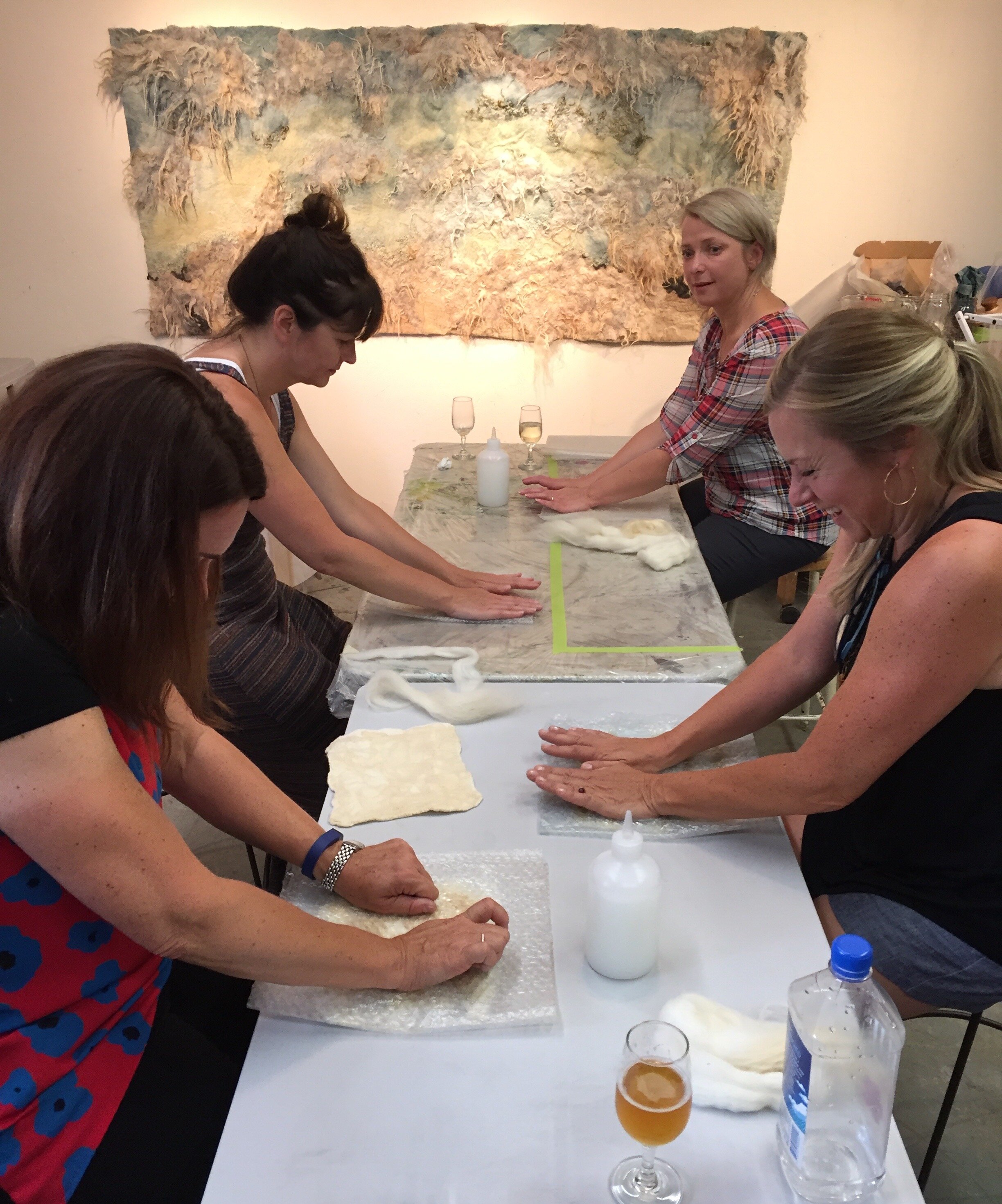I make art using ancestral skills in a contemporary setting. This can take many forms including creating large, highly textured felted panels, or spinning wool to create knotted sculptures incorporating foraged wood and metal.
My work tends to be very graphic, always using fiber - wool, silk, hemp, cotton, linen, paper and plant materials.
Prior careers in both theater and experiential design exposed me to different mediums of storytelling. And along with training in color theory, textiles, design theory and material sustainability, I have an experimental, material driven art practice in my Canyon Studio.
Bodies of work have included: "Journeys that I’ll never Take" which asked questions about our physical and psychological boundaries. 'Love, Hope & Entanglement' - an apropos theme for our ever-changing complex lives. And most recently I showed a series at The Other Art Fair in Los Angeles inspired by the transition into the Neolithic age - shifting from Nomadic behaviors to sedentism, where we created settlements along water courses. Using silk cocoons, a creature's first home as an analogy.
Commissions to your specifications are welcomed. Wall art and architectural installations (reduce echo and improve sound quality). Throws and curtain panels
How is felt made?
Felt is an ancient textile and the wool from which it is made is wondrous! Wool has antibacterial properties and it’s insulating for both sound and warmth. It is able to hold up to 50% of its own weight in water without feeling wet (great if you are a sheep in a rainy climate, or a fisherman wearing a woolly in a stormy sea!). And unlike synthetic fabrics, wool cannot melt, plus it’s incredibly hard to ignite. Wool is so dense there is not enough access for the oxygen required to burn it. It really is the perfect fiber to be next to our skin and in our homes. But how do we turn this amazing raw wool into interesting felt?
#1. Know your wool
Sometimes I buy wool as roving, but a lot of times the wool comes directly from a sheep that has been sheared on a farm (in the spring the sheep give up their woolly winter coat) and I have to clean it. I like to know the names of the sheep which share their fleece. You might find wool here from Spock, Romeo, Phoenix or Dash.
Wool primarily comes from Sheep but we can call the hair of some species of alpacas, goats, camels and rabbits, wool too. There are so many breeds; some might have fine straight wool and others have long and curly wool locks.
#2. The magic of color
Dyeing is a multi step process. First the wool needs to sit in a mordant so the dye will fix to it and be wash-fast. Mordants tend to be natural metal salts – alum or iron but I can use soy beans too. Then a dye bath is made so we can extract the color. I only use natural dyes from sources such as flowers and bark. And finally, the wool is placed into the dye bath to soak up the color.
#3. Amplify the texture
Sometimes the wool is put through a drum carder to blend it with silks and hemp. Or maybe it is spun into yarn and crocheted into thicker sections of wool.
#4. Create the composition
The wool is laid out in the chosen design. Then it’s time to sprinkle on warm water and soap with a watering can. This helps the microscopic scales in the wool open up, ready to slip and attach to adjacent sections of fiber when agitated i.e. rubbing the wool, so each separate strand latches its scales to another strand. And after many hours, and sometimes days, the result is a piece of cloth or woolly object.
The felt you find here is not only toxic free, it will add color, warmth and comfort into your home.




























